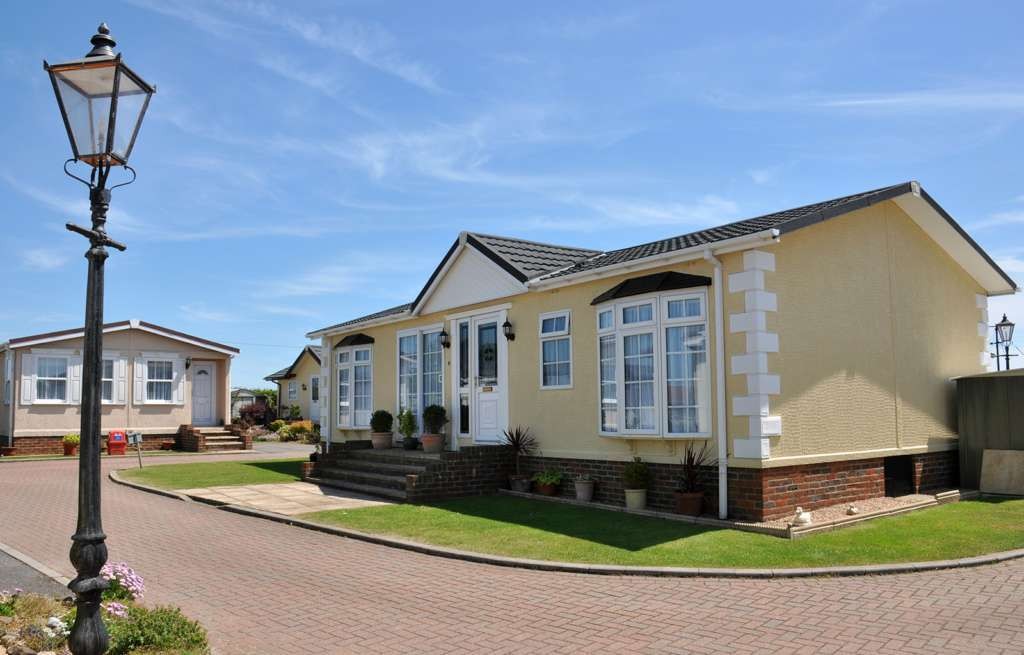Homeownership is a significant aspiration for many, and the U.S. housing market offers diverse options to fulfill this dream. From cozy condominiums to sprawling estates, there’s a home style to suit every preference and budget. Among these choices are manufactured homes, a housing type that often stands out for its affordability, particularly for first-time buyers or those looking to simplify their lifestyle. But What Is A Manufactured Home exactly, and how does it differ from other types of houses?
To put it simply, a manufactured home is a modern iteration of what was once known as a mobile home. Think of it as a significantly upgraded and redefined version. Officially, the term “manufactured home” applies to factory-built homes constructed after June 15, 1976. This date is crucial because it marks the implementation of federal construction and safety standards by the U.S. Department of Housing and Urban Development (HUD). Therefore, while homes built before this date are classified as mobile homes, any prefabricated home built after is considered a manufactured home, adhering to a rigorous set of national standards.
Image: Modern manufactured home exterior showcasing residential design and landscaping.
To truly appreciate the evolution of manufactured homes, let’s briefly explore their origins and understand the key distinctions between the older mobile homes and today’s manufactured residences.
From Mobile Homes to Manufactured Homes: An Evolution in Housing
The concept of mobile homes emerged in the early 20th century, driven by the necessity for adaptable housing as people migrated in search of employment opportunities. These early mobile homes were designed for frequent relocation, resembling what we might recognize today as large campers or trailers. Structurally, they were built upon steel I-beams running lengthwise, allowing them to be positioned on various supports like concrete or wooden blocks, metal stands, or even a permanent concrete foundation. A defining characteristic was the inclusion of an exposed trailer coupler and wheels, emphasizing their portability. Mass production of these mobile homes occurred rapidly to meet housing demands, but initially, lacked consistent quality control and standardized safety regulations.
The Features of Contemporary Manufactured Homes
Today’s manufactured homes are a far cry from the mobile homes of the past. They offer a wide array of customizable floor plans and interior finishes, ranging from basic, budget-friendly models to more luxurious designs. Modern manufactured homes can include features previously unheard of in mobile homes, such as vaulted ceilings, finished drywall interiors, fully equipped contemporary kitchens, spacious bedrooms with walk-in closets, and bathrooms boasting recessed bathtubs and whirlpools. These homes are built to be comfortable, stylish, and functionally equivalent to site-built homes.
Another important aspect of modern manufactured homes is their intended use. Despite the historical association with mobility, today’s manufactured homes are generally designed for single-location placement. They are transported to a site and intended to remain there permanently. When considering purchasing a manufactured home, deciding on its location is a primary step. Options include buying or leasing land to place the home on, or leasing a lot within a dedicated manufactured home community.

Image: Aerial view of a manufactured home community illustrating lot layouts and residential streets.
Choosing to live in a manufactured home community offers access to community utilities and amenities, which can include services and recreational facilities. However, this often comes with additional costs and adherence to community-specific rules and regulations. Conversely, placing a manufactured home on privately owned land provides greater autonomy and can potentially enhance the home’s long-term value.
Purchasing Your Manufactured Home
The most common way to purchase a manufactured home is through retailers who specialize in these types of homes. Retailers typically offer both new and pre-owned manufactured homes. Alternatively, existing manufactured homes can be found through real estate agents, general real estate listings websites, and specialized online marketplaces for manufactured homes. In some regions, direct purchases from manufactured home development owners are also possible.
Buying from a retailer shares similarities with purchasing a car. Sales centers usually display model homes for prospective buyers to tour. You’ll typically have choices in single, double, or even triple-section floor plans, ranging from compact one-bedroom, one-bathroom homes under 500 square feet to larger four-bedroom, three-bathroom homes exceeding 2,500 square feet. The purchasing process often allows you to select a floor plan, customize features, and arrange financing all in one place. Retailers usually also coordinate transportation and installation of the home to your chosen site.
If you opt to reside in a manufactured home community, remember to factor in ongoing lot rental fees, as well as charges for community amenities, services, and utilities. These costs are crucial to consider when determining your housing budget. If you plan to place your manufactured home on your own land, it’s essential to verify local zoning regulations concerning manufactured homes. Additionally, you’ll need to investigate local requirements for septic systems, electrical connections, and building permits to ensure compliance.
Financing Options for Manufactured Homes
Financing a manufactured home can present different considerations compared to financing a traditional site-built house. Unless you own the land where your manufactured home will be situated, the purchase is often categorized as personal property rather than real estate. This distinction usually leads to securing a chattel loan instead of a conventional mortgage. Chattel loans typically involve higher interest rates, shorter repayment terms, and may offer fewer consumer protection measures compared to mortgages. However, if the manufactured home is permanently affixed to land you own, it may qualify for traditional mortgage financing, potentially offering more favorable terms.
Weighing the Pros and Cons of Manufactured Homes
Considering a manufactured home as your next residence? It’s important to carefully evaluate the advantages and disadvantages to make an informed decision.
Advantages of Manufactured Homes:
- Minimized Construction Delays: Built in a controlled factory environment, construction is shielded from weather-related delays, ensuring a quicker completion timeline.
- Faster Completion Time: Streamlined factory production processes and pre-stockpiled materials contribute to significantly shorter build times compared to site-built homes.
- Customization Options: While perhaps not as extensive as fully custom site-built homes, manufactured homes often offer choices in floor plans, features, and finishes, allowing for a degree of personalization.
- Assured Quality and Safety: Built to meet the HUD Code, manufactured homes adhere to federally mandated quality and safety standards, providing peace of mind regarding structural integrity and safety features.
- Budget-Friendly Homeownership: Generally more affordable than comparable site-built homes, manufactured homes can make homeownership accessible to a wider range of buyers.
Disadvantages of Manufactured Homes:
- Land Availability and Costs: Finding suitable and affordable land for placement can be a limiting factor in some areas.
- Community Living Costs: Residing in a manufactured home community introduces ongoing lot rent and fees for amenities, potentially adding to the overall cost of living.
- Financing Limitations: Financing options may be more restricted and potentially more expensive compared to site-built homes, particularly if securing a chattel loan.
- Limited Customization: While options exist, the degree of customization and available amenities might be less extensive than in site-built homes.
- Perception and Stigma: Despite significant improvements, some lingering stigma associated with older mobile homes may persist in public perception.
- Value Appreciation: Manufactured homes may not appreciate in value at the same rate as site-built homes, and in some cases, may depreciate over time, although this can depend heavily on location and how the home is maintained and situated.
Manufactured homes present a viable and increasingly attractive pathway to homeownership for many individuals and families. Improvements in design, quality, and safety standards have made them a compelling option in the housing market. Understanding what is a manufactured home, along with its benefits and drawbacks, is crucial for anyone considering this housing type.
For further exploration into various housing options and to determine the best fit for your needs, consider researching different types of homes and consulting with housing professionals to make a well-informed decision on your home buying journey.
